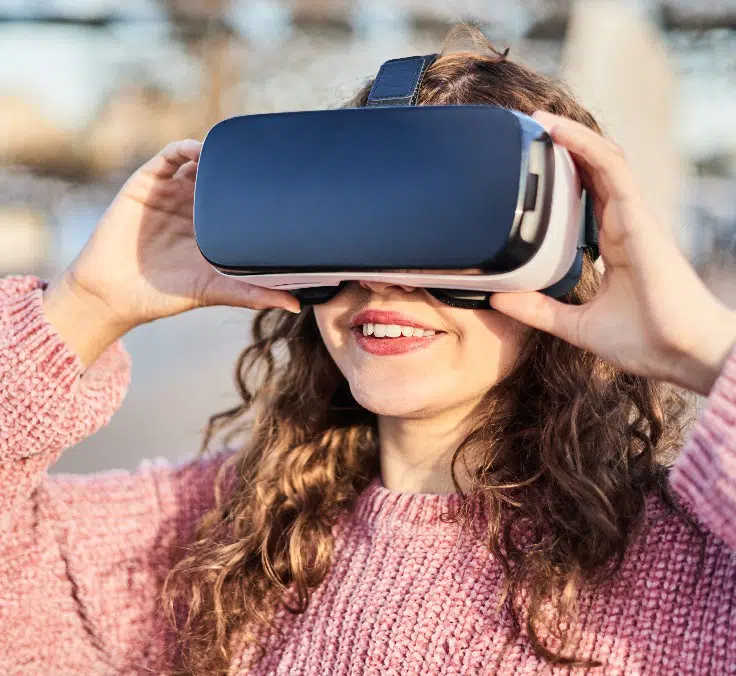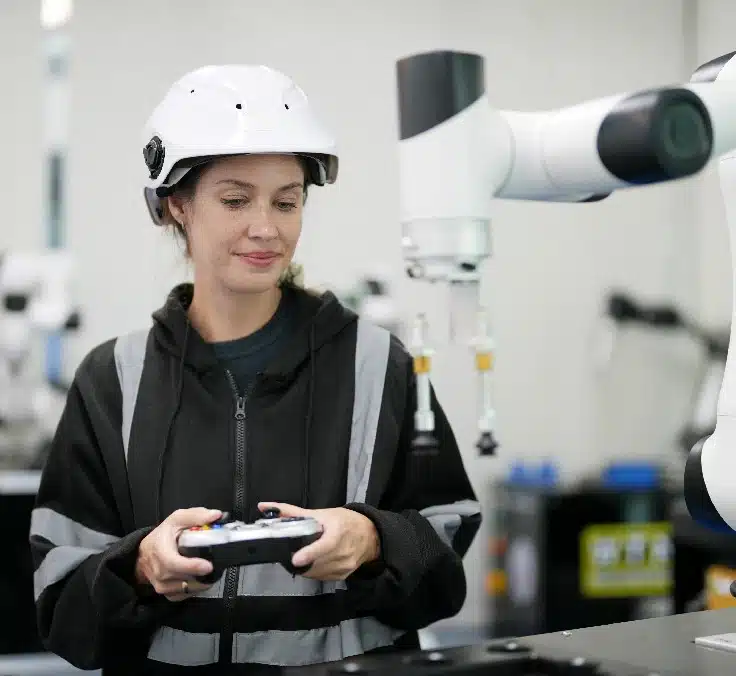INNOVATION| 21.06.2023
Virtual reality and augmented reality: How can they improve the world?
In the digital age in which we live, virtual reality and augmented reality have become two revolutionary technologies that are changing the way we experience the world around us. It is no longer just about observing, but about immersing yourself in new environments and discovering infinite possibilities. These possibilities are also transforming the insurance world and opening doors to new ways of relating to it.
Innovations in the digital domain are moving fast, transforming sectors that have long seemed immovable or slower to evolve. In today’s article, we will explore what virtual reality and augmented reality are, how they work and how they are transforming various industries, including insurance services.
What is the difference between virtual reality and augmented reality?
Virtual reality (VR) and augmented reality (AR) are two related technologies that offer immersive and interactive experiences to users, but in different ways.
Virtual reality is a technology that allows users to fully immerse themselves in a computer-generated environment, creating a sense of presence in a virtual world. Users use devices such as VR headsets or goggles to visualize and experience this environment in a three-dimensional way. VR is often complemented by motion tracking devices and controllers that allow users to interact with the virtual environment and manipulate objects in it by being able to explore different locations, participate in games, simulations and experience situations that may be difficult or dangerous in real life.
Augmented reality, on the other hand, combines computer-generated virtual elements with the real environment, superimposing real-time digital information over the user’s view of the physical world. AR is experienced through devices such as smartphones, tablets or augmented reality glasses. These devices use cameras and sensors to capture the real environment and then add and superimpose virtual elements, such as images, videos, text or graphics, on the device’s screen allowing users to interact with these virtual elements in the physical environment, obtaining additional information, performing specific tasks or playing games in the real world.
What uses can these technologies have?
Both virtual reality and augmented reality have extended their reach beyond video games, one of the first contexts where they showed signs of their capabilities, and have found applications in various industries.
Other uses for virtual reality
- Education: allows students to explore realistic virtual environments and participate in interactive simulations to learn complex concepts in a more hands-on way. It is also used in professional training, such as in the training of doctors or pilots.
- Medicine and healthcare: it has begun to be applied in the medical and healthcare field to simulate surgical procedures, allowing surgeons to practice and perfect their skills in a virtual environment before performing a real operation. It is also used for the treatment of phobias and post-traumatic stress disorders, offering virtually controlled and safe therapy.
- Architecture and design: architects and designers use these virtual reality tools to visualize and explore 3D models of buildings and spaces before constructing them. It also allows clients to have a better understanding of the proposed design and make changes before construction begins.
- Tourism and exploration: offers the possibility of exploring tourist destinations virtually, providing immersive experiences before a trip is taken. In addition, it is used in the recreation of historical and cultural sites that have been damaged or destroyed.
- Automotive industry: automotive manufacturers use it to simulate and visualize vehicle design, which aids in the design process and enhances the shopping experience for customers by allowing them to experience the interior of a car before it is launched.
Other uses for augmented reality
- Advertising and marketing: augmented reality is used in interactive advertising campaigns that allow consumers to interact with products and brands in real time.
- Ecommerce: allows customers to virtually try products before buying them. For example, it is possible to visualize how a piece of furniture would look in your home or how a piece of clothing or an accessory would fit you without having to physically try it on. This improves the online shopping experience and helps reduce returns.
- Navigation and location: augmented reality is used to improve navigation and orientation in the real world. These applications can superimpose real-time navigation directions on the device’s camera view, or on a vehicle’s windshield, helping users find specific directions and locations.
- Manufacturing industry and design: can be used in manufacturing and product design to improve efficiency and accuracy. It allows designers and technicians to visualize and test virtual prototypes before physically manufacturing them. It is also used in remote technical assistance, where experts can superimpose instructions and information on a technician’s field of view to assist in repairs or maintenance.
- Art and culture: can be used to enrich the artistic and cultural experience. Museums and galleries can offer guided tours where visitors can get additional information about the exhibits and view superimposed interactive content in real time.
How could both technologies be applied in the insurance sector?
Both virtual reality and augmented reality can be used to facilitate damage inspection in the insurance field. Through the use of mobile devices and other gadgets such as glasses, insurance appraisers can superimpose virtual information in real time on the insured object or property. This allows them to visualize and document damage more efficiently and accurately, streamlining processes.
These technologies can also assist in risk assessment to determine insurance premiums. For example, by using 3D virtual models, insurers can assess the risks associated with the construction of a building, the safety of a vehicle or the analysis of risk factors in a property. This will allow for a better understanding of risks and more accurate pricing.
These tools can also be used for the education and training of insurance agents and appraisers. Through simulations, industry professionals can practice complex situations such as claims management, handling emergencies or interacting with customers. This improves the efficiency and quality of insurance services by providing a practical and realistic learning experience.
And finally, through the use of virtual reality, insurers can simulate risk situations and raise customer awareness of the importance of prevention. For example, in the automobile insurance industry, drivers can virtually experience the dangers of distracted driving or driving in adverse weather conditions, thus encouraging safer driving practices.
RELATED ARTICLES:




